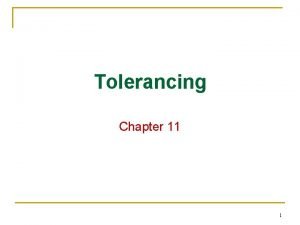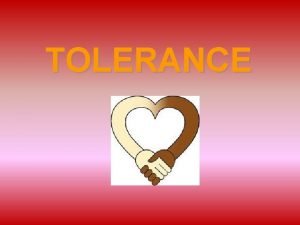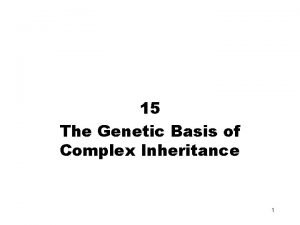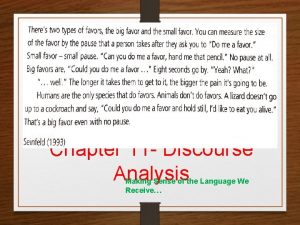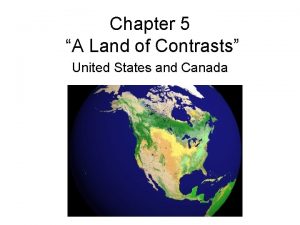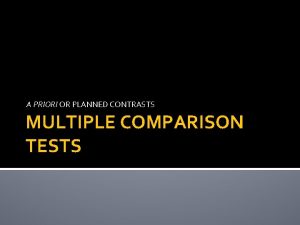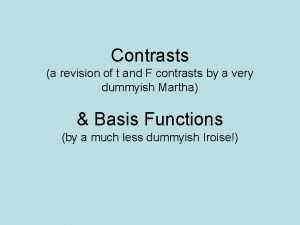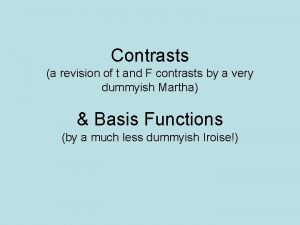Contrasts in tolerance Making sense of differences in












- Slides: 12

Contrasts in tolerance? Making sense of differences in European Prison Rates David Nelken

Introduction • Social factors and Legal variables • External and internal legal culture • Comparing systems: Similarities and Differences

The punitive turn • America as Dystopia - Europe as Utopia?

Making sense of differences in Prison rates • How UN data on comparative prison rates are used as evidence for arguments about punitiveness and tolerance and/or as artifacts for local struggles • Prison rates are not related to crime rates or public views about severity in sentencing. So what explains them?

External factor explanations • Political economy- and politics- are the explanation of differences in prison rates (see eg Cavadino and Dignan/ Lacey/ Downes)

Table 1: Selective prison rates 2005/6 NEO-LIBERAL COUNTRIES USA NEW ZEALAND ENGLAND WALES AUSTRALIA 738 186 148 126 CONSERVATIVE CORPORATIST COUNTRIES ITALY GERMANY NETHERLANDS FRANCE 100 95 128 85 SOCIAL DEMOCRACIES SWEDEN FINLAND ORIENTAL CORPORATISM JAPAN 82 75 62

Three issues needing more study 1 What can prison rates really tell us? 2 How are such rates shaped by criminal procedure? 3 Do punitiveness and tolerance have the same meaning cross - culturally

1. What can prison rates tell us • Are crime rates the same in the countries being compared? If yes, why? If not, are we really explaining differences in punitiveness? • Snapshots can mislead? How can we explain the volatility in prison rates?

2. What is the role of criminal procedure ? • Prison rates are an outcome of criminal justice decisions • Italy as an example- three stages of judgement; Delay and ‘prescription’ • Not just Italy: Low prison rates elsewhere also often ‘achieved’ through attrition. • Is criminal procedure just part of the ‘how -or also of the ‘why’? The autonomy of the ‘legal’ or of the ‘ platonic guardians’

3. Cross- cultural and inter- cultural differences in what is considered punitiveness or ‘tolerance’ • • • Intentions or outcomes ? Contested and Changing Local terms: Gedoken Buonismo/ Perdonismo Garanzie Pelosi

Conclusion: Engaging with local legal actors • Rather than imposing the meaning of punitiveness and tolerance cross- culturally their local sense needs to be recovered • Can offending young people be trusted to go straight? • Can immigrants without homes and work be given the beneft of the doubt?

Comparison- Evil causes evil? • Is more prison always bad - and less prison good? • Is it always the result of other ‘bad’ things. (Even in the USA high prison rates can also be the intended or unintended outcome of otherwise ‘good’ initiatives).
 40h6 tolerance
40h6 tolerance Central tolerance and peripheral tolerance
Central tolerance and peripheral tolerance Tolerance of differences
Tolerance of differences Narrow sense heritability vs broad sense heritability
Narrow sense heritability vs broad sense heritability Narrow sense heritability vs broad sense heritability
Narrow sense heritability vs broad sense heritability Making sense of discourse analysis
Making sense of discourse analysis Contrasts and contradictions signpost
Contrasts and contradictions signpost Contrasts and contradictions
Contrasts and contradictions North carolina land of contrasts
North carolina land of contrasts Irony is the contrast between expectation and reality.
Irony is the contrast between expectation and reality. Chapter 5 a land of contrasts answer key
Chapter 5 a land of contrasts answer key Planned contrast
Planned contrast Anova planned contrasts
Anova planned contrasts
